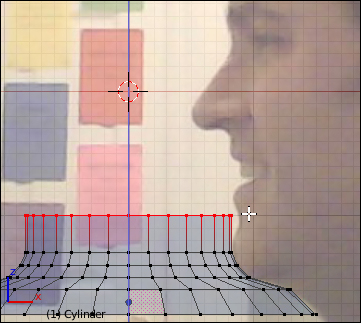There are often many techniques that can be employed to make the same thing. In fact, there is another way that this sort of vase could have been created using mostly just the techniques learned in the previous chapter. Starting with a cylinder at the bottom of the reference image, extrude the top slightly, and scale each extruded segment:

The disadvantage of this method is that it is difficult to get the same level of detail, and the wall inside the body may not be exactly 2 mm the whole way. It is left to the modeler to verify tolerances. The advantage of this method is that a clever modeler could take a picture of two different people facing each other and make a vase that looks different on each side. It requires some clever manipulation of the reference image to line up the features and could make an excellent gift.



